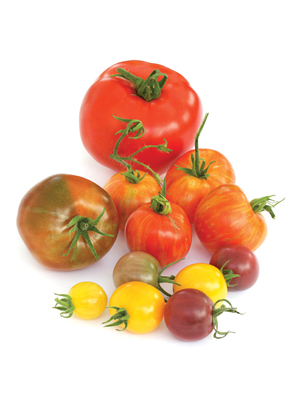Q. I enjoy gardening in medium to large size plastic pots; however, I’m concerned about the roots when the temperatures get hot. Will the heat permeate through the plastic pots and burn the roots? Other than buying clay pots, what else can I do?
A. Yes, this is a legitimate concern. It’s a more significant issue for those plants growing in the same container for several growing seasons than with new plantings. Over time, roots reach the sides and fill the container while the insulating soil layer disappears. Plastic containers have a thin wall and the heat transfers directly through it when hit by the sun, damaging any of the roots next to the wall. I’d be concerned with established Japanese Maples, Camellias, Citrus, Roses, and other ornamentals. Containers with established plants are difficult to keep moist during hot, dry weather. There is little soil to hold moisture and lots of roots so water stress occurs quickly. The late afternoon sun is the most critical as this is when the temperatures are peaking. The heat factor is influenced by the color of the container. White or other bright colors will reflect heat while earth tones and dark colors absorb the heat. When the temperatures are over seventy-five degrees, water often. Be sure to fill the containers the brim and empty the water from any saucer, better yet, remove the saucer altogether. It’s almost impossible to over water plants in containers when the water flows out the bottom. Root rot and other problems are more likely to occur from the constant wicking action when water is left in a saucer not to mention the West Nile Virus concern from the breeding mosquitoes. The best time of the day to water plants is in the morning before eleven. With ninety degrees or higher temperatures, water daily and make a second application may be necessary in the late afternoon to those plants in the heat of the day sun. It’s advisable to apply a wetting agent such Grow More E-Z Wet or similar product to increase the water flow through a root-bound plant. Besides frequent watering, here are some other things you can do. Move those containers in the afternoon sun to a shadier location when the temperature is over ninety degrees. These plants can survive temporarily in shady conditions since our typical heat spell only last a couple of days. Plant dollies or walkers with wheels make this a simple task and are available at your favorite garden center. Another option is to place the plastic pot inside a larger container, the so-called pot in pot method. You need to leave at least a two-inch space between the containers that are then filled with small bark to increase the insulation.
Q. In April, I planted several heirloom, Brandywine tomatoes. The plants are producing plenty of flowers, but they’re drying up and falling off before they set fruit. Could you tell me what might be causing this?

A. It is early for the fruit set on Brandywine tomatoes, so I wouldn’t be pushing the panic button just yet. It’s not unusual for the first group of flowers to fall off and fail to set fruit. You should expect to see tomatoes by the end of the month or early July. Tomatoes primarily fail to set fruit because of cool nights and or the lack of pollination. Another issue can be excessive nitrogen causing the plants too grow rapidly. I don’t think this is an issue since there was no mention of any excessive growth. Tomatoes like constant nighttime temperatures above fifty-five degrees. The marine influence is a significant factor in delaying the formation of tomatoes. The closer you’re to the water, the more problematical it can be. Warm days generally translate into warm nights inland so the fruit set occurs as expected. You need to be selective as not all tomato varieties produce well in all of our many microclimates. Unlike other edibles, fertilization and pollination does not occur simultaneously in tomatoes. They’re two separate events. Once pollination occurs, a pollen tube must form to transfer the pollen down to the base of the flower where fertilization occurs and tomatoes form. The cool nights slow the tube formation. After four days, the flowers drop off whether or not fertilization has occurred. The chief pollinator of tomatoes is the wind and not bees. We usually have enough of an afternoon breeze to do the trick; however, poor air circulation can still be a problem. You can aid Mother Nature by gently shaking the plants. The best time to do this is midday. Another option is to spray the open blossom with Blossom Set. It is successfully used on melons, squash, and cucumbers where pollination is a problem.
Leave a Reply